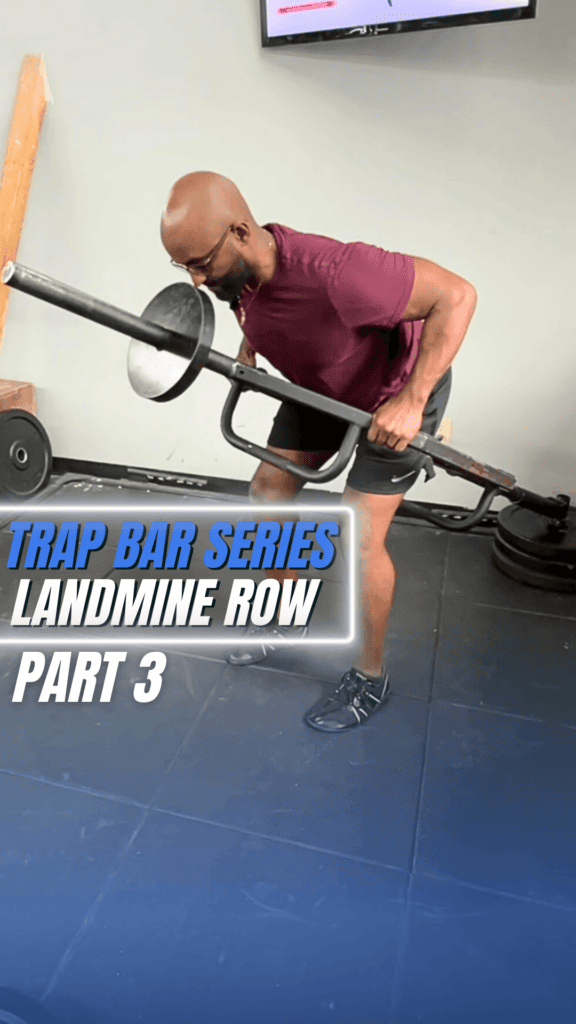Today, we are highlighting a gym staple known as the Trap Bar, also referred to as the Hex Bar, which has been quietly revolutionizing the world of strength training. At Rocky Mountain Flex Fitness, we’re committed to helping you reach the full potential of your workouts by offering some of the best specialty equipment, and the Trap Bar is definitely a gym member and trainer favorite.In this equipment spotlight, we’ll dive into the Trap Bar and explore its unique design, benefits, and the exercises you can do with the Hex Bar that can make a big impact on your strength and fitness goals.
What is the history of the Trap Bar?
The Trap Bar has a fascinating history that takes us back to the world of strength training and innovation in the 1980s.
This uniquely shaped barbell, with its hexagonal frame and neutral grips, has revolutionized the way we approach certain exercises. The origins of the hex bar can be traced back to the mid-1980s, when powerlifter Al Gerard first conceptualized it. Gerard’s vision was to create a barbell that would alleviate the stress on the lower back while deadlifting and allow for greater versatility in lifts such as the stiff leg deadlift, shrug, and uplight row.
His invention, initially called the “Gerard Trap Bar,” soon gained popularity within the lifting community and became a staple in gym equipment inventories. Over the years, the hex bar has continued to evolve and adapt, becoming an indispensable tool for athletes, powerlifters, and fitness enthusiasts seeking to optimize their training routines.
The trap bar and a traditional barbell are both pieces of gym equipment used for strength training, but they have distinct differences in design and how they are used.
Let’s take a look at the Trap Bar vs Barbell:
- Shape and Design:
- Trap Bar: The trap bar, also known as the hex bar, has a hexagonal shape with handles and sleeves on each side. The lifter stands inside the bar, holding the handles at their sides.
- Barbell: A standard barbell is a straight bar with sleeves on each end where weight plates are loaded. The lifter typically stands outside the bar when using it.
- Grip and Hand Position:
- Trap Bar: With the trap bar, the lifter’s hands are positioned at their sides, creating a neutral grip instead of the pronated/supinated grip on a traditional barbell. Because this is a more natural way to lift a heavy load off the floor, it is often more comfortable for some lifters and can reduce stress on the lower back.
- Barbell: Barbell exercises involve various hand positions, including overhand, underhand, and mixed grips, depending on the exercise. This can affect how the exercise targets different muscle groups.
- Exercise Variations:
- Trap Bar: The trap bar is primarily used for exercises like trap bar deadlifts, shrugs, and rows. It’s known for its versatility in targeting the legs, back, and traps.
- Barbell: A barbell is used for a wide range of exercises, including squats, bench presses, overhead presses, bent-over rows, and more. It offers a variety of grips and exercise possibilities.
- Ease of Use:
- Trap Bar: Some find the trap bar easier to use, especially for deadlifts, as it allows for a more upright and natural lifting posture. It’s often seen as a user-friendly option, especially for beginners.
- Barbell: Barbell exercises can require more technique and stability, particularly in exercises like the conventional deadlift or back squat.
- Muscle Engagement:
- Trap Bar: The trap bar may shift the emphasis slightly more toward the quadriceps and less on the hamstrings and lower back compared to a traditional barbell deadlift.
- Barbell: Barbell exercises offer a broader range of muscle engagement, making them a staple in strength training and powerlifting routines.
Ultimately, the choice between a trap bar and a barbell depends on your training goals, personal preferences, and the specific exercises you want to perform. Most lifters incorporate both into their routines to target various muscle groups and add variety to their workouts.
Here are some benefits of lifting with the Trap Bar:
- Reduced Stress on Lower Back: The trap bar allows you to lift weights with a more upright posture compared to a conventional barbell and puts less shear force on the lumbar spine. This can reduce the stress on the lower back, making it an excellent choice for individuals with lower back issues or those who want to minimize the risk of injury.
- Neutral Grip: The trap bar’s handles provide a neutral grip, which can be more comfortable and wrist-friendly for some people. This grip variation can also alleviate stress on the wrists and allow the shoulders to be externally rotated vs. the internal rotation that most of us sit in hunched over a computer daily.
- Versatility: While the trap bar is often associated with trap bar deadlifts, it can be used for various exercises like trap bar shrugs, rows, farmer’s walks, and more. This versatility allows you to target different muscle groups in creative ways. Check out the video to see how trainer Yosef uses the trap bar while doing a landmine row.
- Beginner-Friendly: The trap bar is often considered more beginner-friendly than a barbell because of its user-friendly design and reduced technical demands. It’s a great way for novices to learn fundamental lifting mechanics.
- Quadriceps Emphasis: Some lifters prefer the trap bar deadlift because it places a slightly greater emphasis on the quadriceps compared to the hamstrings and lower back. This can be advantageous for those looking to develop their quad strength.
- Variation: Incorporating the trap bar into your routine adds variety to your workouts. Changing your training routine can help break plateaus and keep your workouts interesting.
- Safety: The reduced risk of lower back strain and injury, combined with the ease of use, can make the trap bar a safer option for many lifters, especially when lifting heavy weights.
It’s important to note that the choice between a trap bar and a barbell depends on your specific fitness goals, body mechanics, and personal preferences. Some athletes and strength trainers still prefer the barbell for certain exercises because of its unique benefits. The best approach may be to incorporate both tools into your training regimen to enjoy the advantages of each
How heavy is a Trap Bar?
What kind of exercises can you do with a Trap Bar:
We hope this list of Trap Bar exercises will help inspire you on how you can incorporate this amazing piece of equipment into your workout routine. Remember to use proper form and start with an appropriate weight for your fitness level when performing these exercises with a Trap Bar.
If you are looking for more guidance on how to perform these exercises and are located in Denver, you might want to consider the many benefits of working with a personal trainer.
At Rocky Mountain Flex, our trainers have a passion for helping all people achieve their goals, whatever they may be, and if you don’t know what those goals should be, we can help you with that too! Our personal trainers are uniquely qualified with knowledge in strength training, yoga, bodybuilding, weight management, competition training and posing, strength training for skiing and snowboarding, functional strength training, and weight training for marathon runners, as well as trainers who specialize in MMA training.
Our gym currently has over 8,000 square feet of gym floor space, and we’re excited to let you in on some big news – we’re expanding the gym and adding another 4,000+ square feet to our current floor plan by opening the wall into the commercial space next door. This move is designed to enhance your fitness experience by bringing you a bigger variety of equipment, more space for our trainers and members, a new 60-foot turf space for functional fitness, sleds, and more, as well as a new fully enclosed classroom space.



















